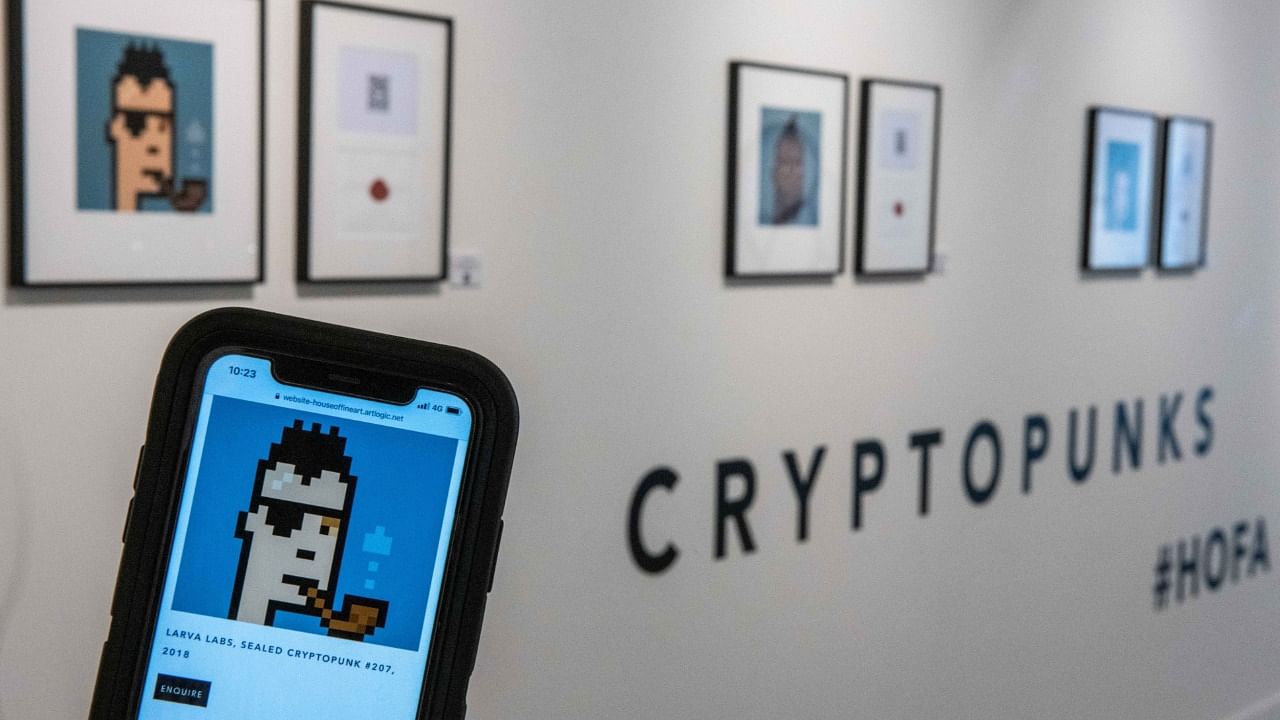
By Paul J Davies
You probably know someone with a commemorative coin or two, on display among porcelain ornaments and family photos — a 1925 Stone Mountain Memorial silver half-dollar (worth $100), perhaps, or a silver 5-pound coin for Her Majesty the Queen’s 95th birthday.
So, how about the same thing, but digital? Britain’s finance minister, Rishi Sunak, has asked the Royal Mint to come up with ideas for a non-fungible token (NFT) to show that the UK is hip to digital assets.
Maybe young people really will want to buy a state-backed piece of digital merch to add to their Minecraft and Fortnite skins, or virtual Nike sneakers and Gucci bags, to flaunt in the metaverse. It all sounds pretty silly to me, but then what do I know?
The idea of NFTs is to use cryptographic blockchain technology, the tools behind Bitcoin, to create unique tradeable claims on some digital thing — an image, a “first edition” of a piece of music, membership of the Bored Ape Yacht Club.
These have really taken off in the past couple of years when people spent a lot of time at home, online and with money burning a hole in their pockets. Digital art has boomed: More than $18 billion was spent on almost 17 million images and other collectibles between April 2021 and March 2022, according to a report about money in the metaverse last week from Citigroup analysts. That all came after the OMG-moment when a piece by Beeple sold for $69 million at Christie’s auction house.
But art is barely the half of it: NFTs could be used to confer property rights throughout the metaverse, whatever that becomes. Projections about the potential value of digital stuff are all finger-in-the-air guesswork. What is real is the amount already being spent and invested. Last year, venture-capital funding to NFT startups jumped to $4.8 billion from next-to-nothing the year before, according to Citigroup.
So what would a Royal Mint NFT commemorate? Royal events are popular among the old crowd, but it’s probably not a theme the target market would fancy. The subject could be anything: The mint produces thousands of coins (made of actual stuff) for collectors interested in dinosaurs, Stephen Hawking, Wallace & Gromit, or Brexit among a mystifyingly large selection.
But why is Sunak even doing this? He’s seen a vision of tax revenue flickering in the future. He wants to “make the UK a global hub for crypto-asset technology.”
Britain has a habit of jumping onto financial bandwagons. George Osborne, financial minister from 2010 to 2016, made huge fanfare of making London the global hub for offshore renminbi bonds outside China. In 2016, London welcomed the first renminbi Chinese sovereign bond sold offshore. Since then, well….The London Stock Exchange Group says 18 issuers have listed more than 100 bonds worth 32 billion renminbi, about $5 billion, which is not a lot.
There’s a lot of hype around crypto and no doubt Bitcoin and its rivals are still wildly volatile, speculative playthings. But big institutions are researching and experimenting with all aspects of this technology. Often it’s for dull things like payment processing: JPMorgan Chase & Co. for example, has JPM Coin, which is meant to make cross-border payments faster and cheaper.
Banks are preparing for the day when they can use blockchain technology to “tokenise” all kinds of financial assets and make them more easily tradeable. They just need regulators to set some reliable ground rules.
Gary Gensler, chair of the Securities and Exchange Commission, is rallying support and pushing to collaborate with the Commodity Futures Trading Commission to do just that — work out how market makers, custodians and other participants ought to have their roles defined and separated where necessary.
There are huge questions still to be answered. With NFTs, the collector who buys it doesn’t necessarily own the thing they’ve paid for. Typically, they own a record of a web address where they can view the metadata that says they own something. Maybe the creator retains the original property rights — though you could say the same about a first edition of Harry Potter or Oliver Twist. Maybe smart people can counterfeit versions of an NFT you think you own.
Maybe the computer power needed for mining everything crypto-related is just too energy intensive to be viable for regular use. But to be clear, large banks and investors are gearing up to exploit it in any way that looks profitable. It could be nothing, or it could be the stepping stone to the financialisation of anything and everything.
A Royal Mint NFT is a silly bit of political marketing. But governments and regulators absolutely should be doing everything possible to understand this technology deeply and prepare for all the ways in which it might be used in the decades ahead.
Watch the latest DH Videos here: